Espoo Museum of Modern Art
Mobile Guide to the Exhibition Social Fabric
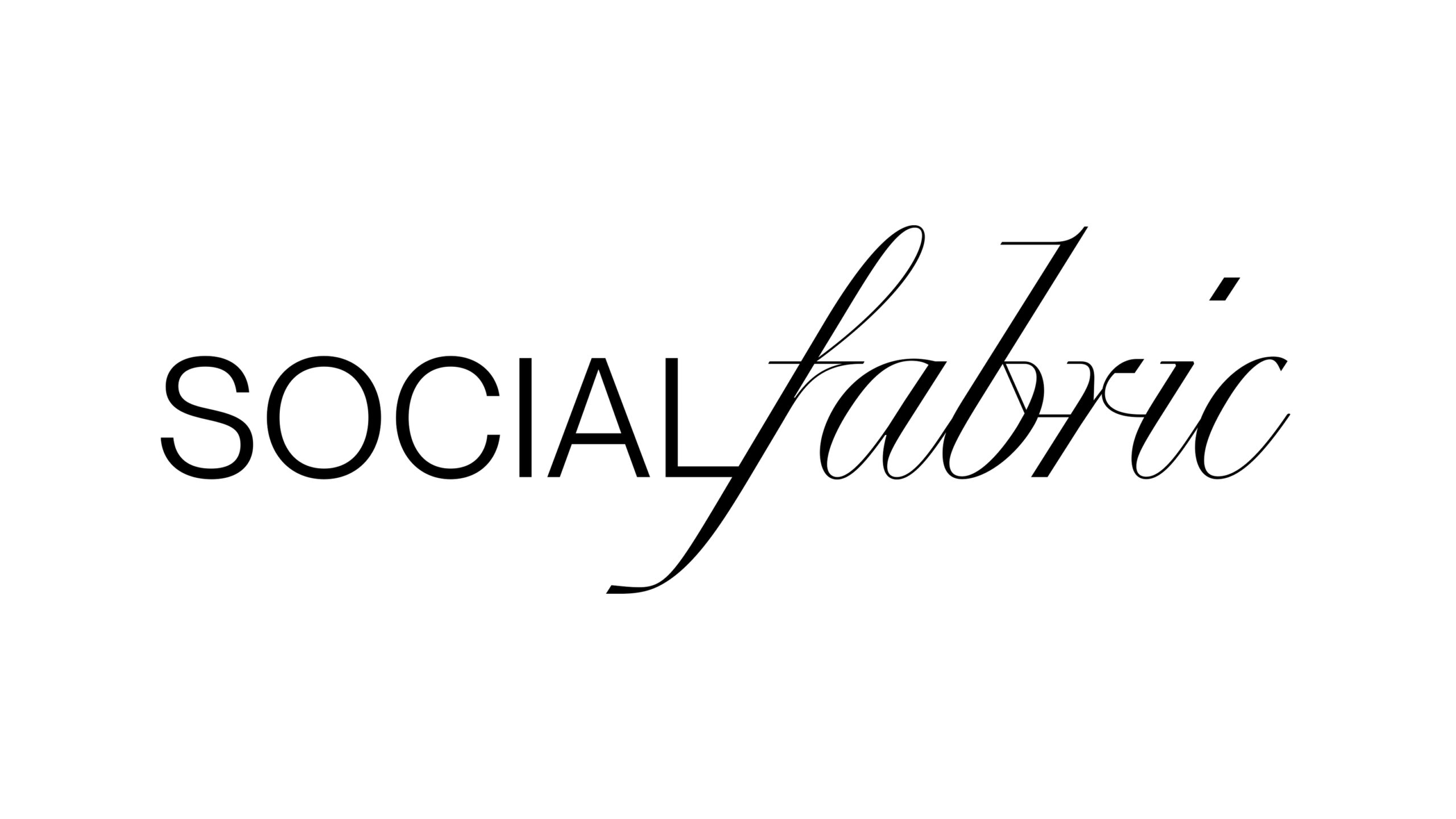
In this mobile guide, you will find texts about the artists in the exhibition, as well as images of selected works. In addition, at the bottom of the page, there is a list of contributors and acknowledgments.
Social Fabric brings together a group of contemporary fashion designers and artists that explore the cultural fabric of fashion, and its rituals and trepidations. Contemporary fashion designers are spearheading a new critical way of making and consuming fashion. They are exploring complex cultural issues as well as the role of fashion in society.
The exhibition presents fashion, textile art, sculpture and film. It includes both established and emerging designers and artists from the Nordics and Northern Europe.
Aalto University team, Fashion discipline
Traces
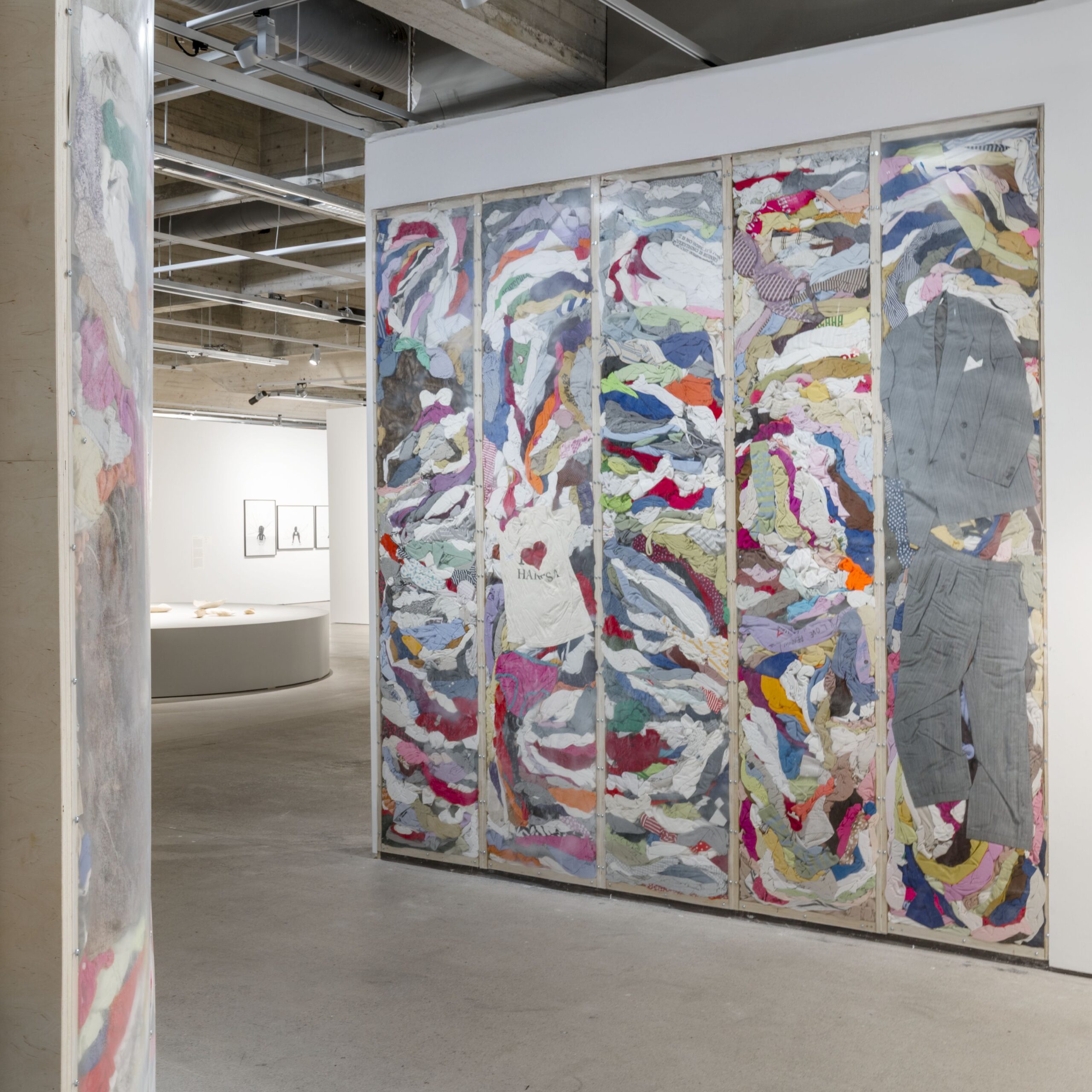
The installation is co-designed by five Aalto University students of fashion who were commissioned to create a portal to the exhibition. They were asked to co-create an immersive entrance made from repurposed garments. The installation is made from clothing donated from the Helsinki Metropolitan Area Recycling Center. In 2023, approximately 830,000 kilograms of textiles were donated to the Recycling Center, of which over 80 per cent were reused.
As imprints of past lives, garments are stuffed in panels behind plexiglass. The clothes selected for the installation are in such poor condition that they are deemed unfit to be re-sold at the Recycling Center. The installation highlights the waste and throw-away culture associated with fashion, and it redeems the value of the low-status clothes as works of art.
Aalto University team, Fashion discipline
Apollo Da Costa Doria, *1999, Finland
Nhung Huynh, *1996, Finland
Y Kiili, *1993, Finland
Kuutti Lemmetyinen, *2000, Finland
Ruusa Vuori, *1999, Finland
Group mentor: Elina Määttänen
The work has been produced in collaboration between Aalto University’s Fashion discipline, the Helsinki Metropolitan Area Reuse Centre, and EMMA – Espoo Museum of Modern Art.

Abeshu, Margaret
Nkisi Riders
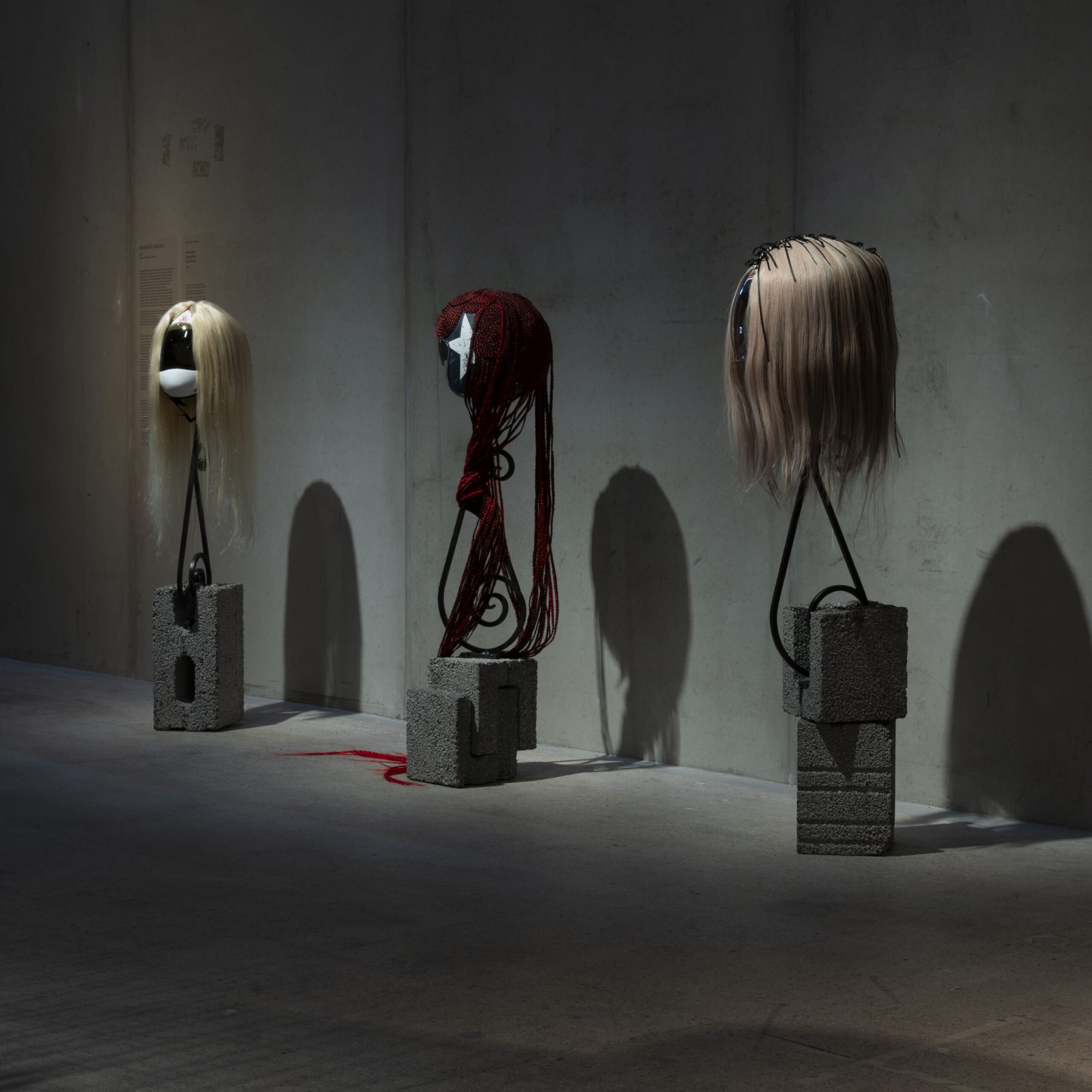
Norwegian-Ethiopian fashion designer and artist Margaret Abeshu (b. 1990) explores Afro-diasporan* experiences through memory, materiality, and movement. Nkisi Riders (2024) misappropriates Italian Futurism** to critique Western ideals of speed and progress, using Black hair as a political symbol of resistance and beauty.
Braided and extension hair, wrought iron, motorcycle helmets, and building blocks evoke tensions between assimilation and self-determination, referencing African mask traditions while transforming Futurist aesthetics into a commentary on Black identity and historical displacement.
*Diaspora refers to the dispersion of a people or ethnic group from their original homeland to different parts of the world. It can also refer to a scattered community that maintains its cultural roots.
** Futurism was an art movement and literary movement that emerged in Italy in the early 20th century. It despised everything old and traditional while idealizing everything modern, such as machines, technology, speed, and war.
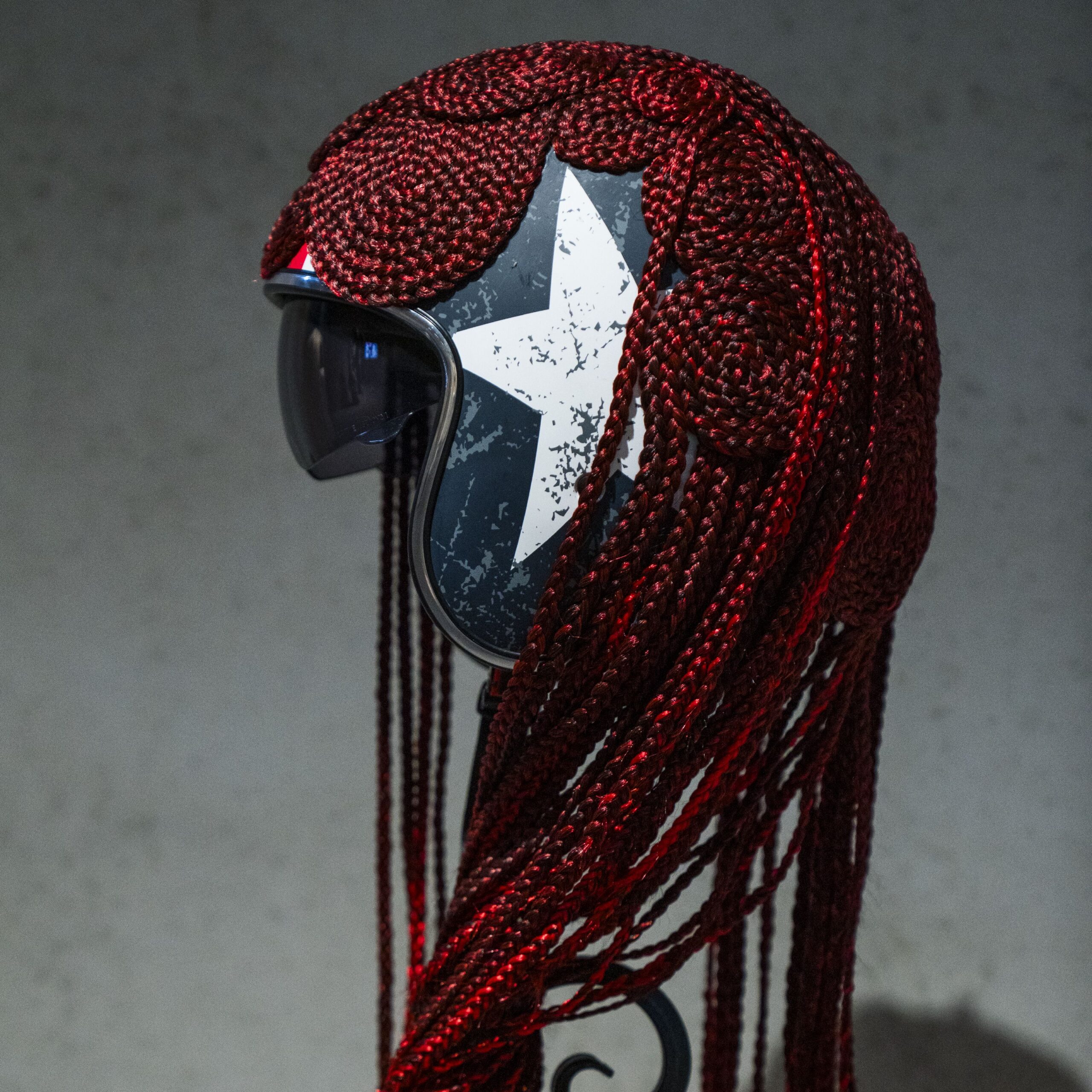
Friman, Idaliina
Kursu
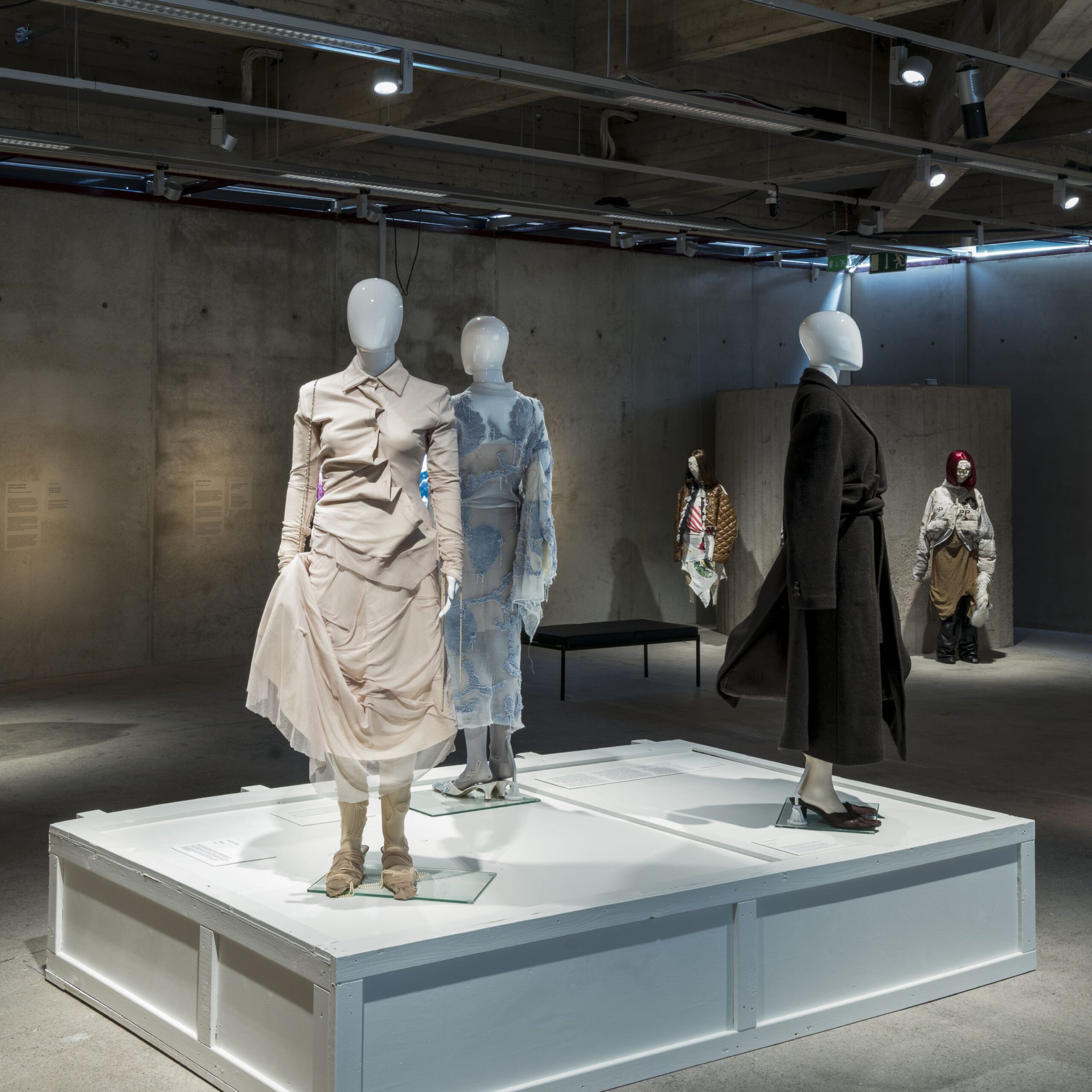
Idaliina Friman’s (b. 1991) Kursu (2023) collection springs from her family’s migration history. During the Second World War, Friman’s grandparents had to leave their homes in Karelia and Lapland. Friman has studied the objects and clothes they took with them on their journey.
The objects chosen for the journey were carried, stitched and hidden inside the garments. The patternmaking of the garments is based on the principle of hiding: pearls, jewellery and accessories are attached into the clothing made in repurposed materials. The weight of these objects transforms the silhouettes unexpectedly.
While exploring her grandparents’ experiences, Friman also reflected on how inherited traumas affect her personally. Through her work, she addressed her own sense of rootlessness and emotional attachment to objects and materials.
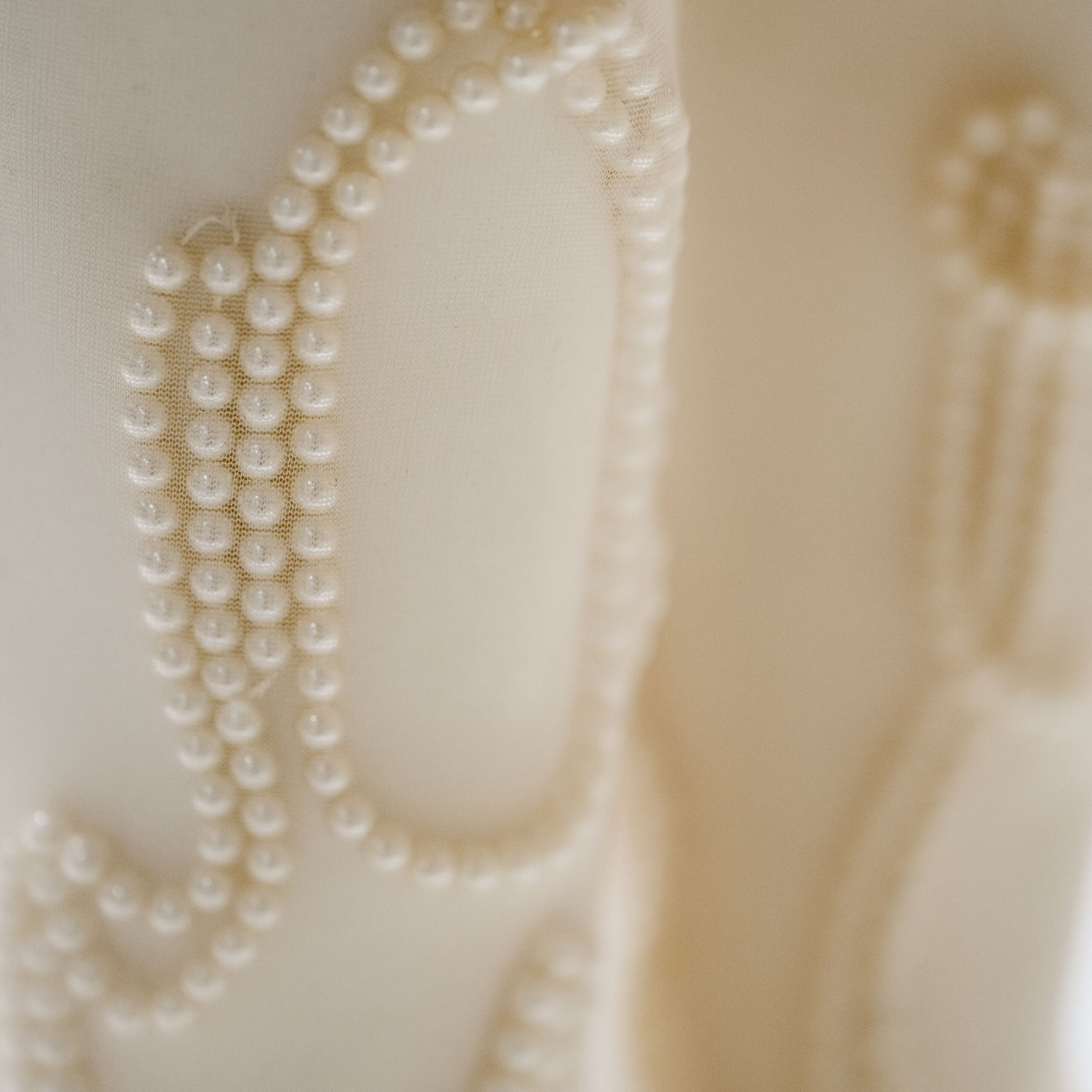
Greis, Lauri
Karelian Sportlore
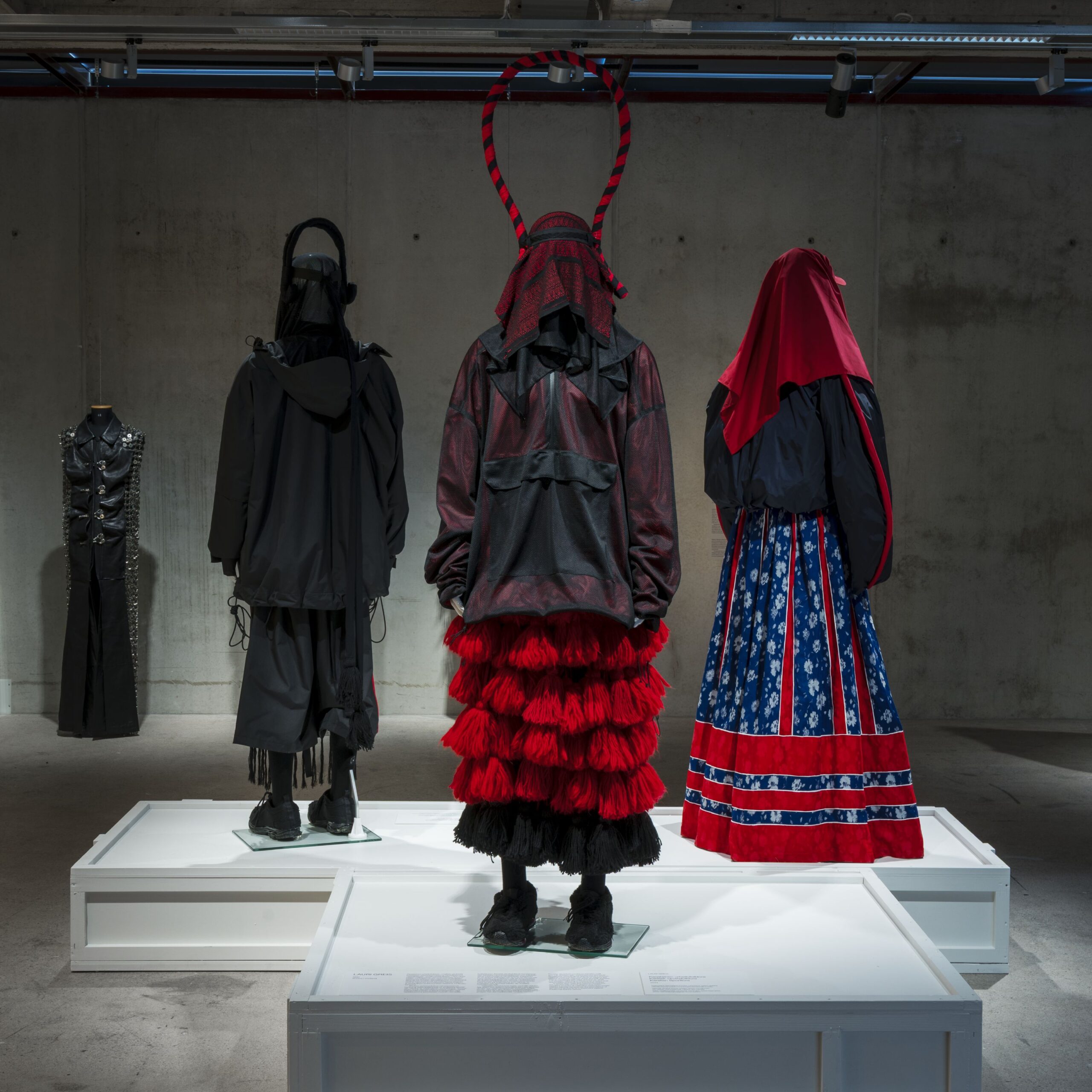
Karelian Sportlore (2024) combines Karelian craft and folk dresses with contemporary technical sportswear. Inheriting his grandmother’s Antrean national costume led Lauri Greis (b. 1991) to explore the history of Finnish national dress and folk dresses. This is combined with idea of Finns as “shell suit people”, referring to Finland as a nation that appreciates practical and functional clothes.
A tassel skirt, veils and Sykerö headdress are married with sporty stripes and water-repellent anoraks. A collection exploring Finnish fashion identity transcends the boundaries of gendered dressing as a statement against traditional fashion norms.
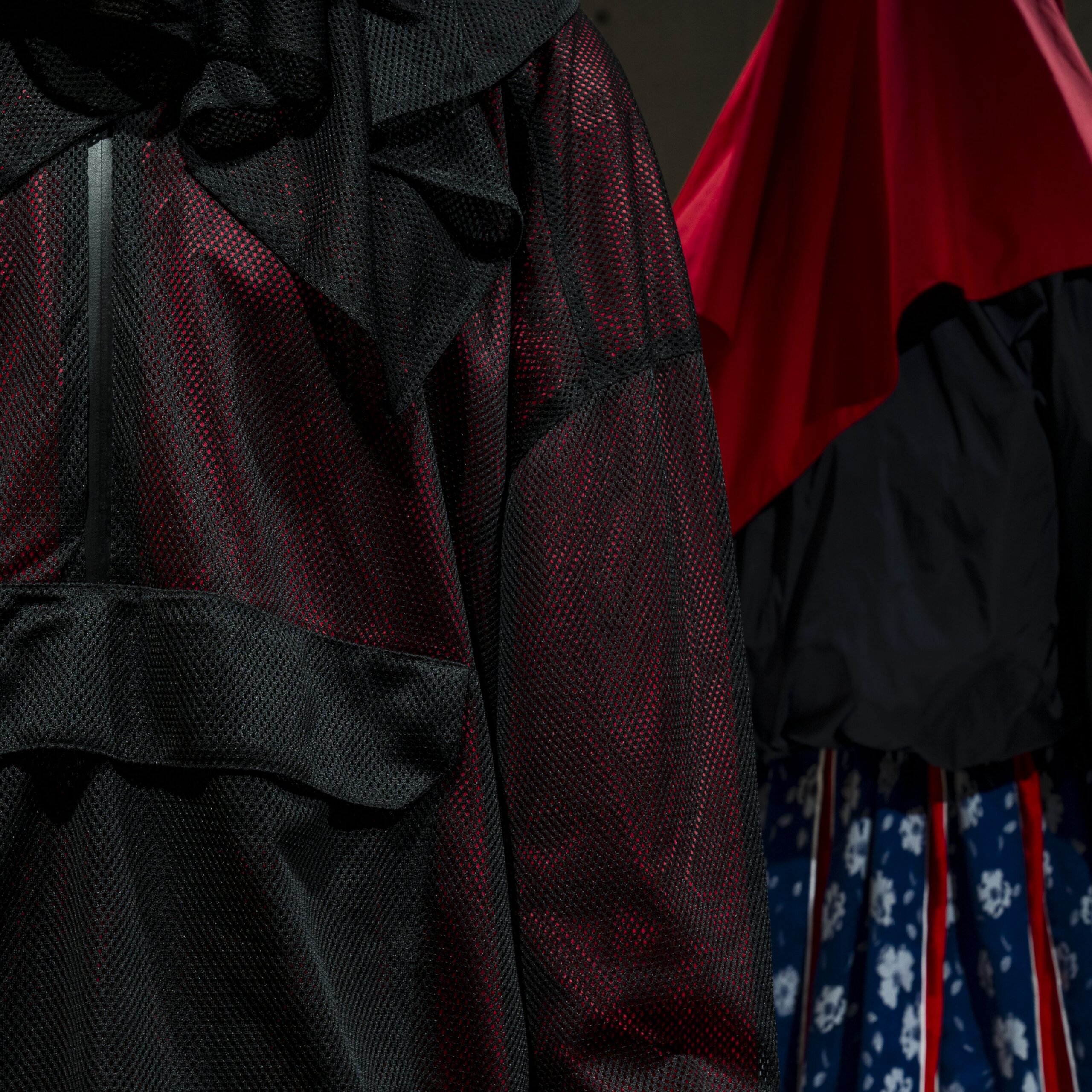
Heinsaar, Sasha
PERIPETEIA
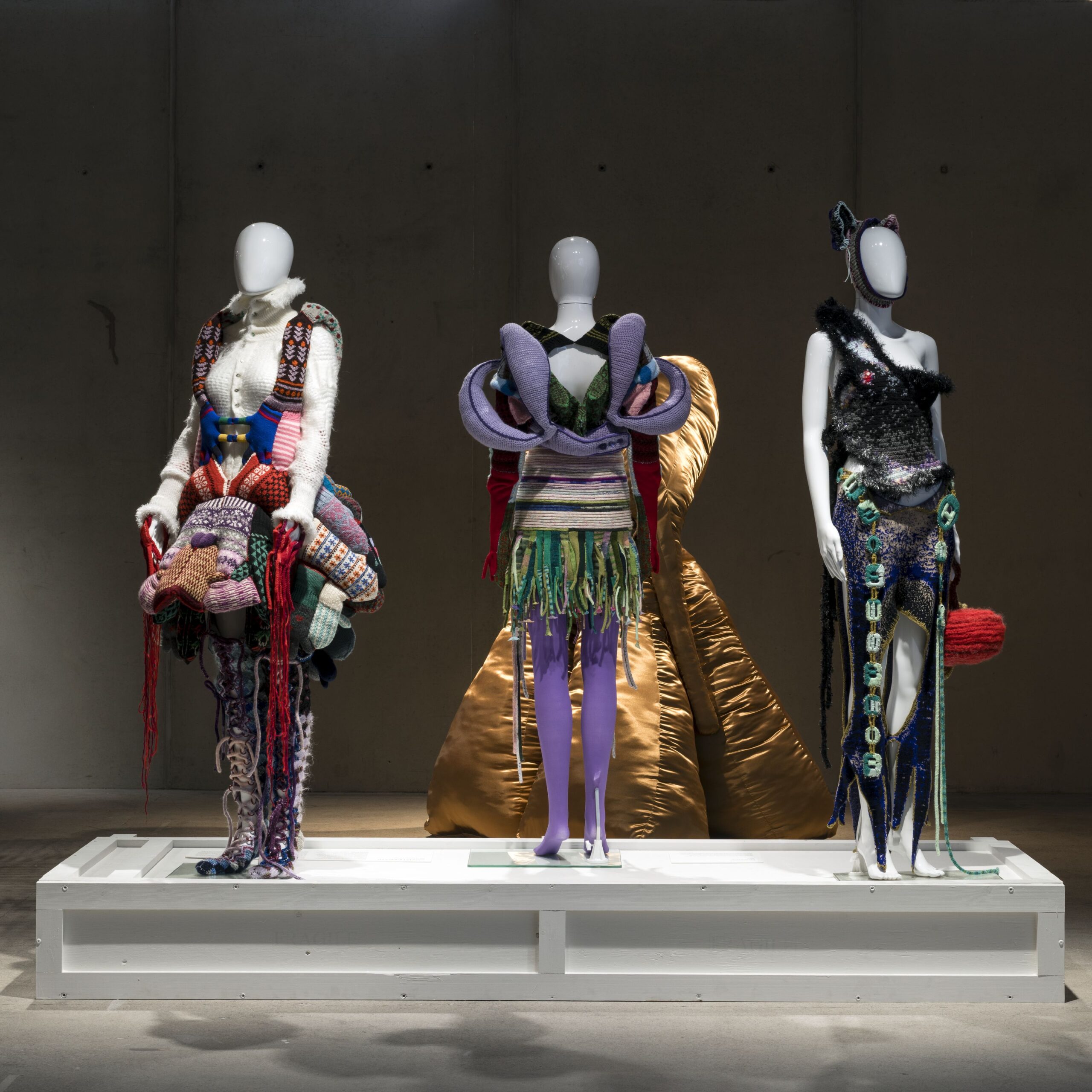
Sasha Heinsaar’s (b. 1997) work revolves around hand-made crafts and fashion created from dismissed sources, deadstock yarns and discarded textiles. Heinsaar considers Slavic folk tales as carriers of valuable histories, passed down through generations.
The work interprets folk tales’ characters and symbols, including a rabbit, an apple and chicken legs. These are made in wearable forms through knitting, crocheting and patchwork. PERIPETEIA (2022) comments on the current political climate in the Slavic region. It also serves as Heinsaar’s creative outlet to react to the ongoing Russian invasion of Ukraine.
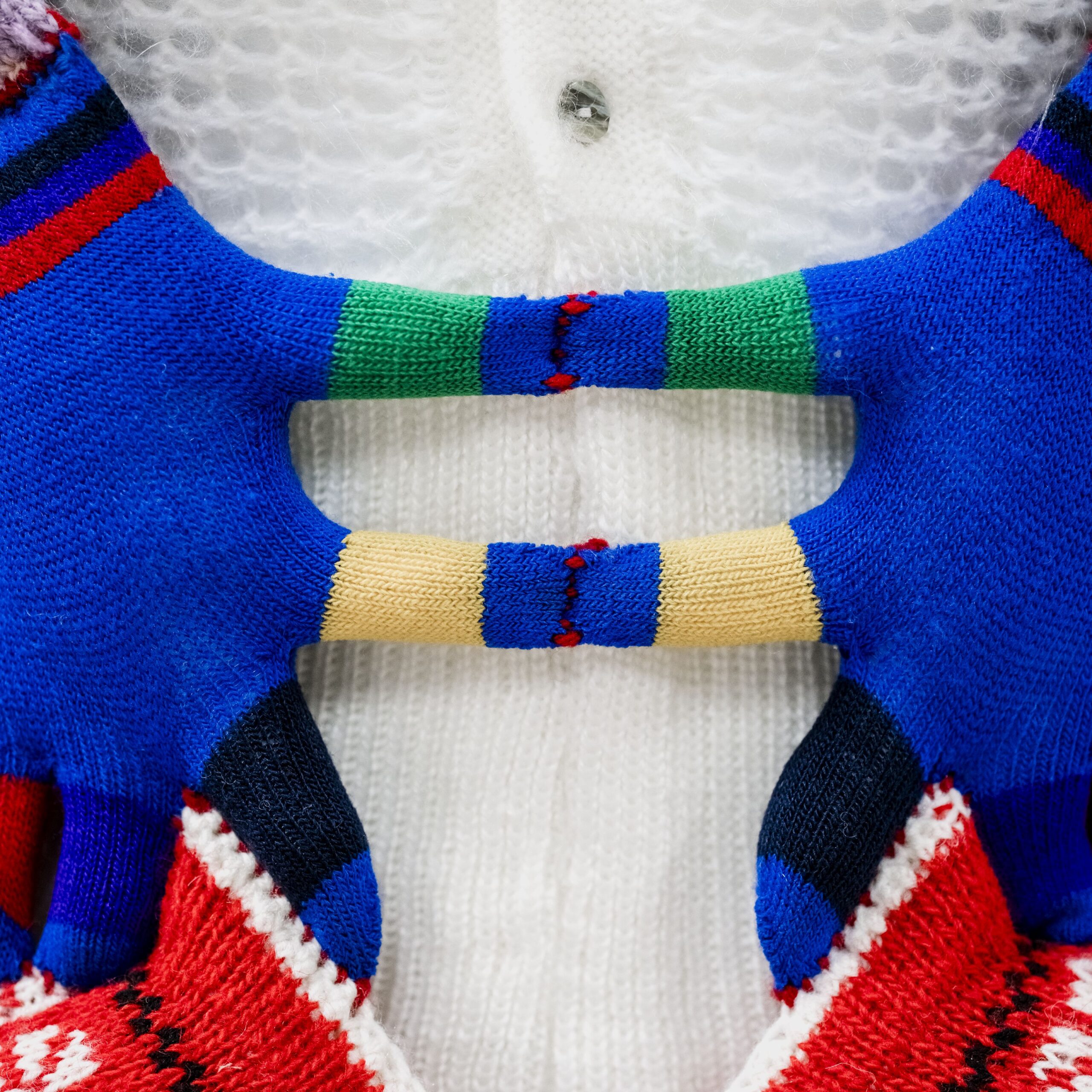
Hutchison, Jeremy
Dead White Man
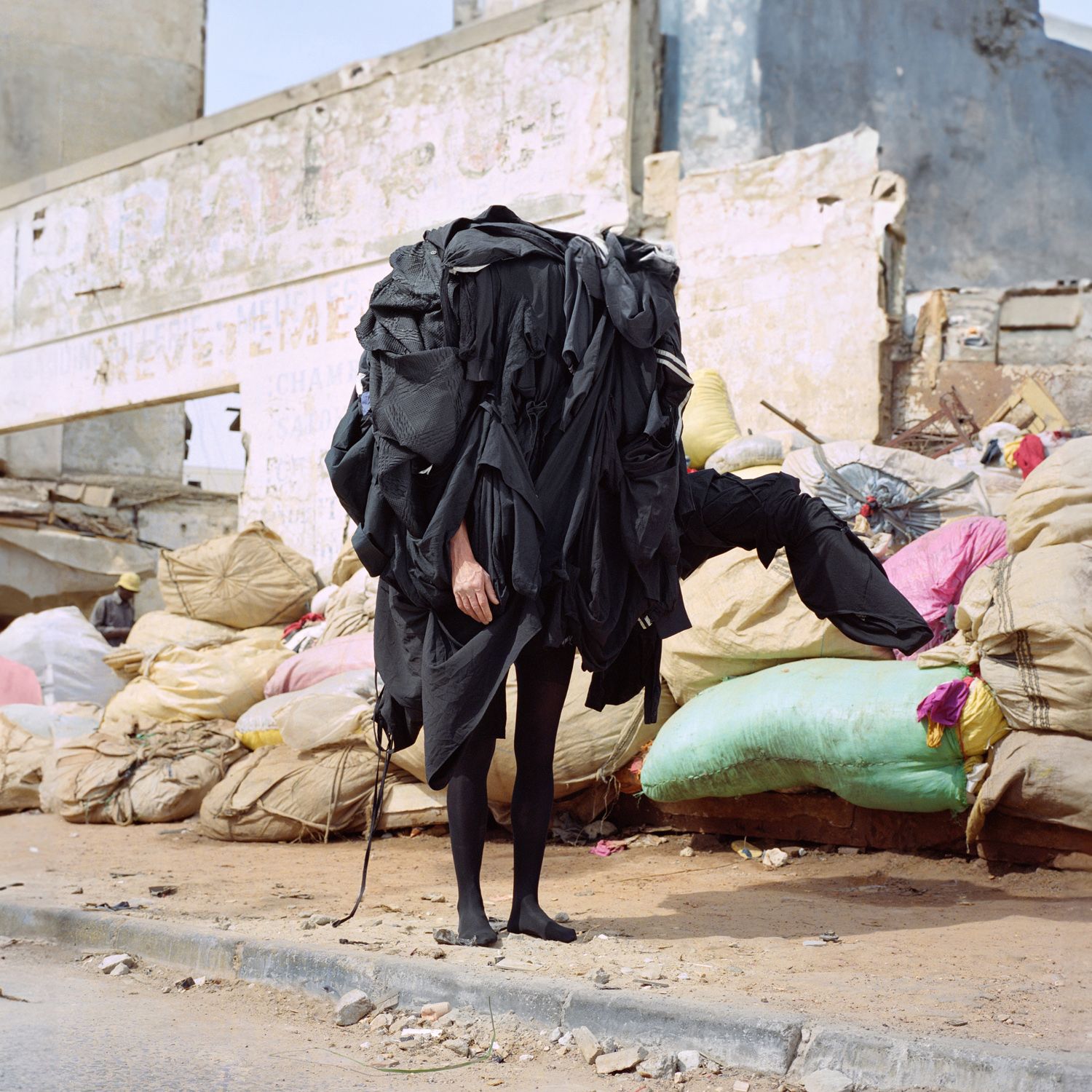
Artist Jeremy Hutchison (b. 1979) uses performance to disrupt systems of power. His work intervenes in consumer culture and capitalism.
An estimated 23.63 billion garments enter the secondhand clothing market every year. This accounts for three items per person on the planet. The majority of these are shipped to Africa – especially to Ghana and Nigeria – where almost half of them are burned or piled on mountains of landfill. In Ghana, these garments are known as ‘Dead White Men’s Clothes’.
In this video, Hutchison transforms himself into the Dead White Man; an embodiment of the global secondhand clothing industry. Wearing used clothes acquired in West African street markets, this “clothing zombie” reverses the supply chain – returning to the sites of production and consumption in the Global North.
Lantink, Duran ja Pennywafelhuis
Crackle Tendril
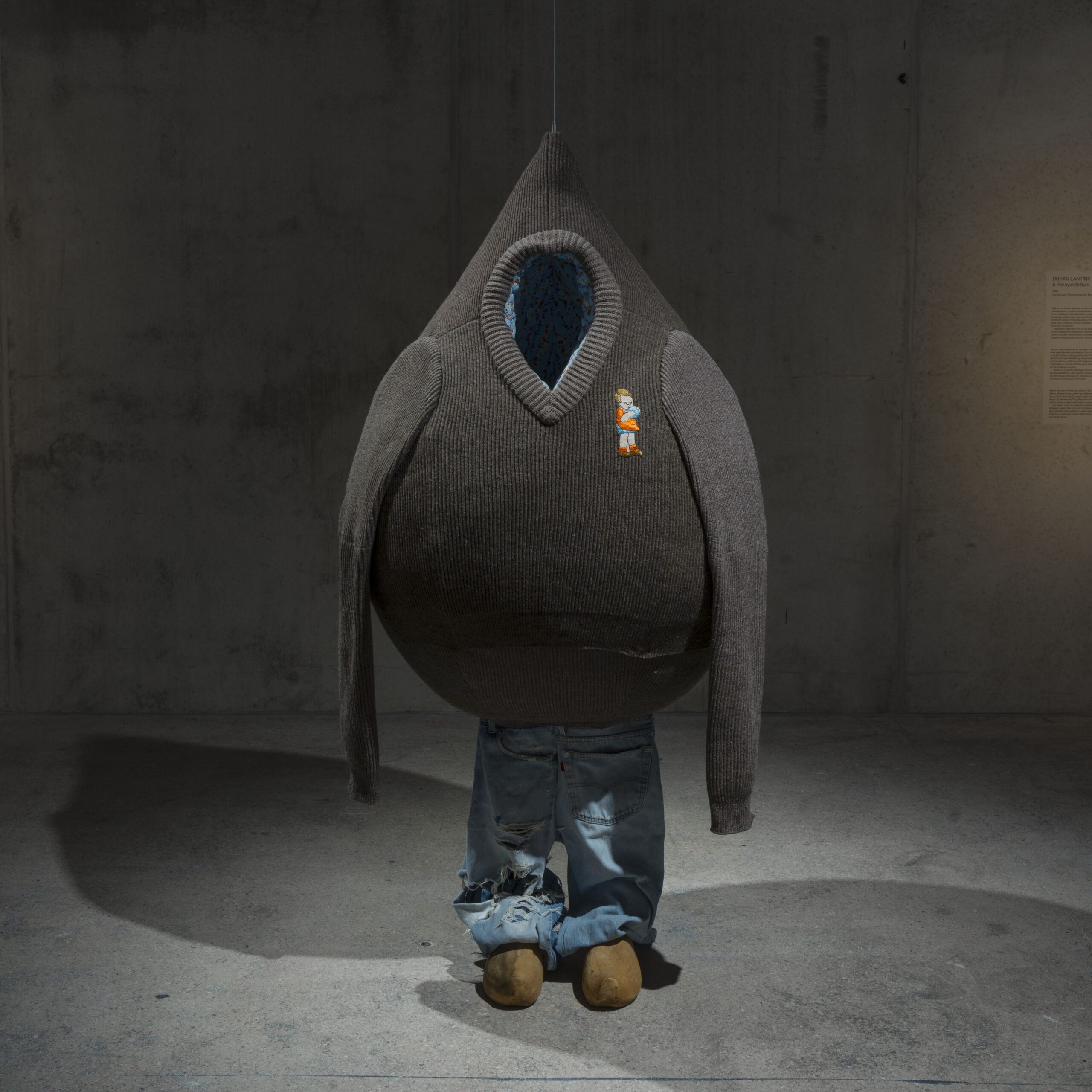
What is the value of traditional clothing in the future? To explore this, fashion designer Duran Lantink (b. 1988) has collaborated with Pennywafelhuis, a Dutch social-artistic project centre in the suburbs of Middelburg in the Netherlands. The collaboration joins creatives from various cultural traditions with Lantink’s sustainability ethos.
The artwork is part of a series that explores the clothing traditions of different regions from both local and global perspectives. The piece displayed in the exhibition is a tear-shaped textile sculpture made from a used scarf, vintage military shirts, Levi’s 501 jeans, and wooden shoes.
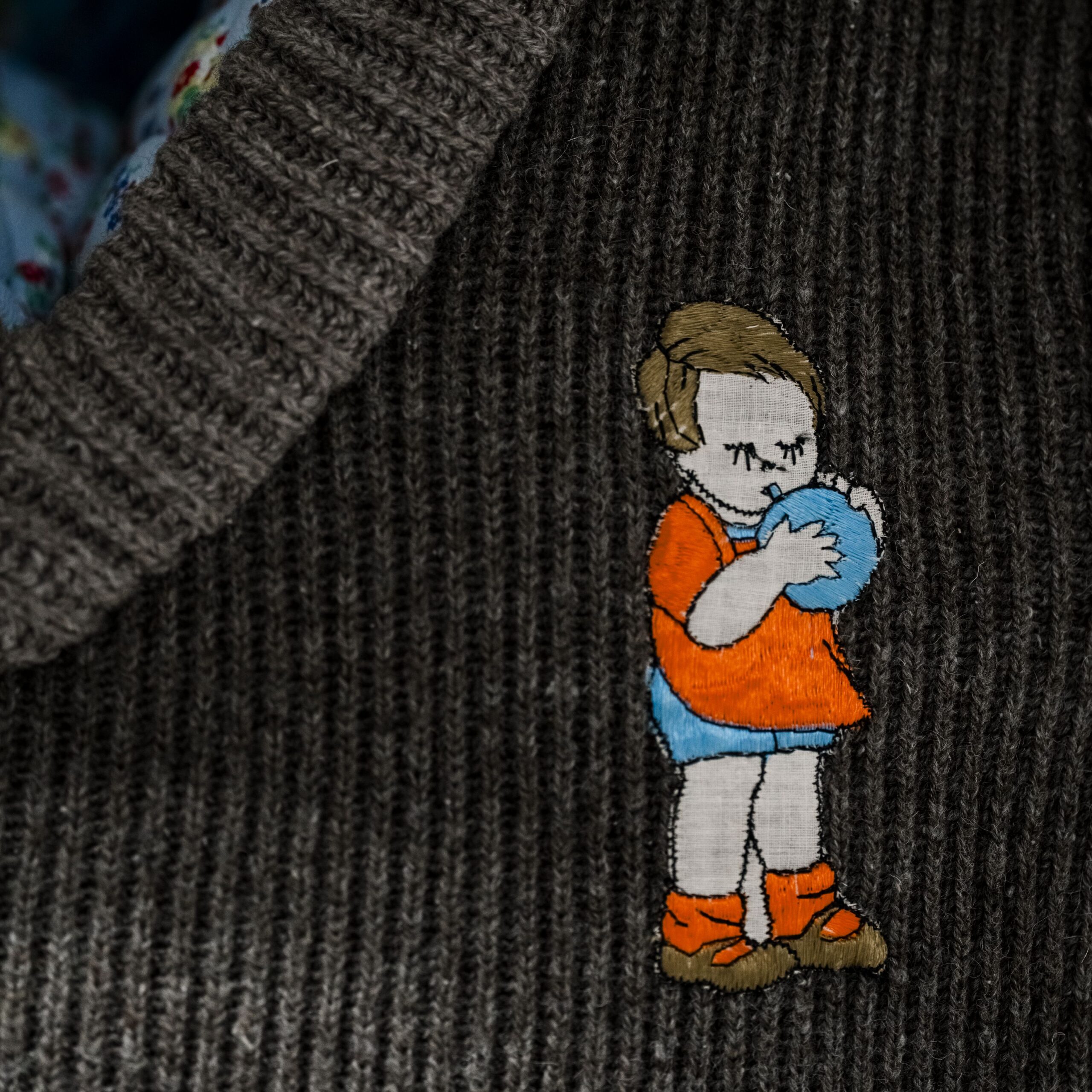
Mandegar, Abbas
Made in Pakistan
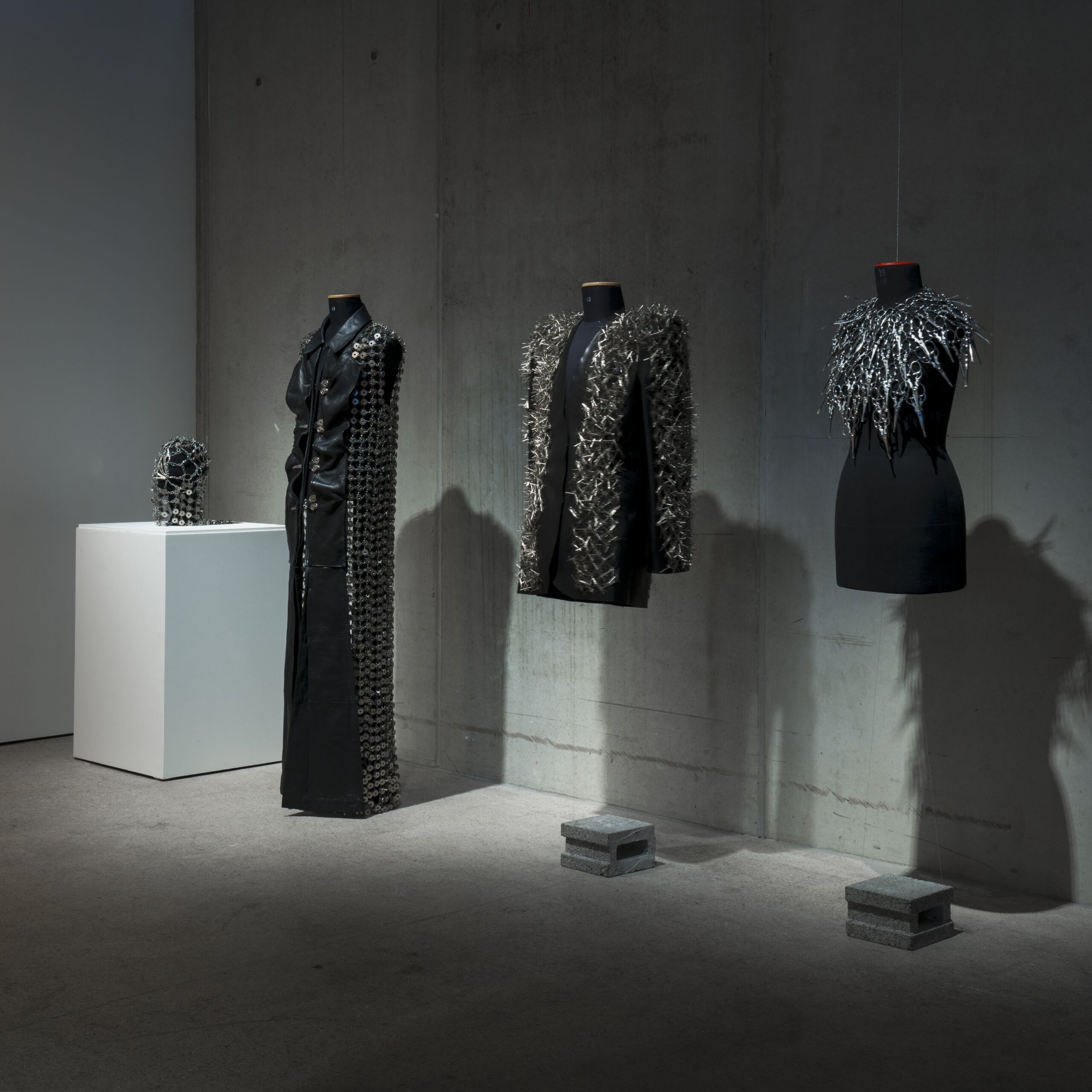
Made in Pakistan (2024) reflects Abbas Mandegar’s (b. 1999) own experiences with pain and anxiety as a child labourer in garment factories in Pakistan. A refugee from Afghanistan, Mandegar’s childhood was filled with sewing tools, instead of toys. Now a designer based in Sweden, Mandegar incorporates the tools of fashion – scissors, pins and sewing machine bobbins – into the garments as symbols of struggle and survival.
The geometrical ornamentation pays homage to the Hazara, the designer’s native Afghan tribe. Mandegar is reclaiming his childhood and immigrant story, as well as highlighting the human suffering involved in global, fast fashion.
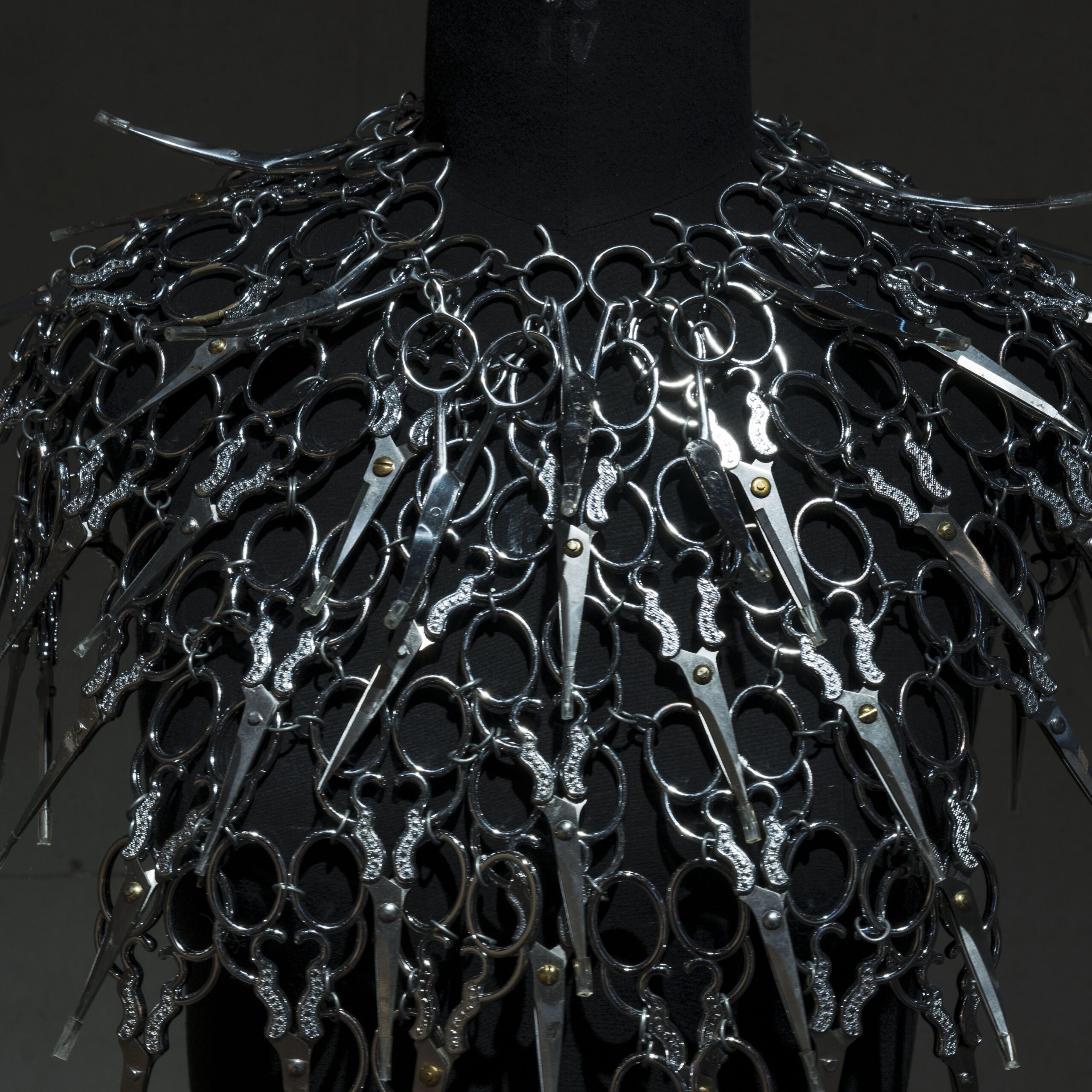
Matei, Linea
Spine

Textile artist Linea Matei (b. 1990) draws from their Romanian-Swedish cultural background and their lived experiences of being in-between. They explore how relations, behaviours and cultural norms affect people and societies.
The textile sculpture depicts two bodies that are interconnected by a shared spine. It explores the ways in which we lean on each other. It can be seen as an embodiment of two people, once united, now drifting apart. The duality also exists within the individual where inner thoughts and desires can both align and diverge as feelings of connectedness and loneliness. Both faces of the bodies have mirrors, inviting us to engage and ask: How are you reflected?

O’Dwyer, Sinéad
Everything Opens to touch & Supervisor
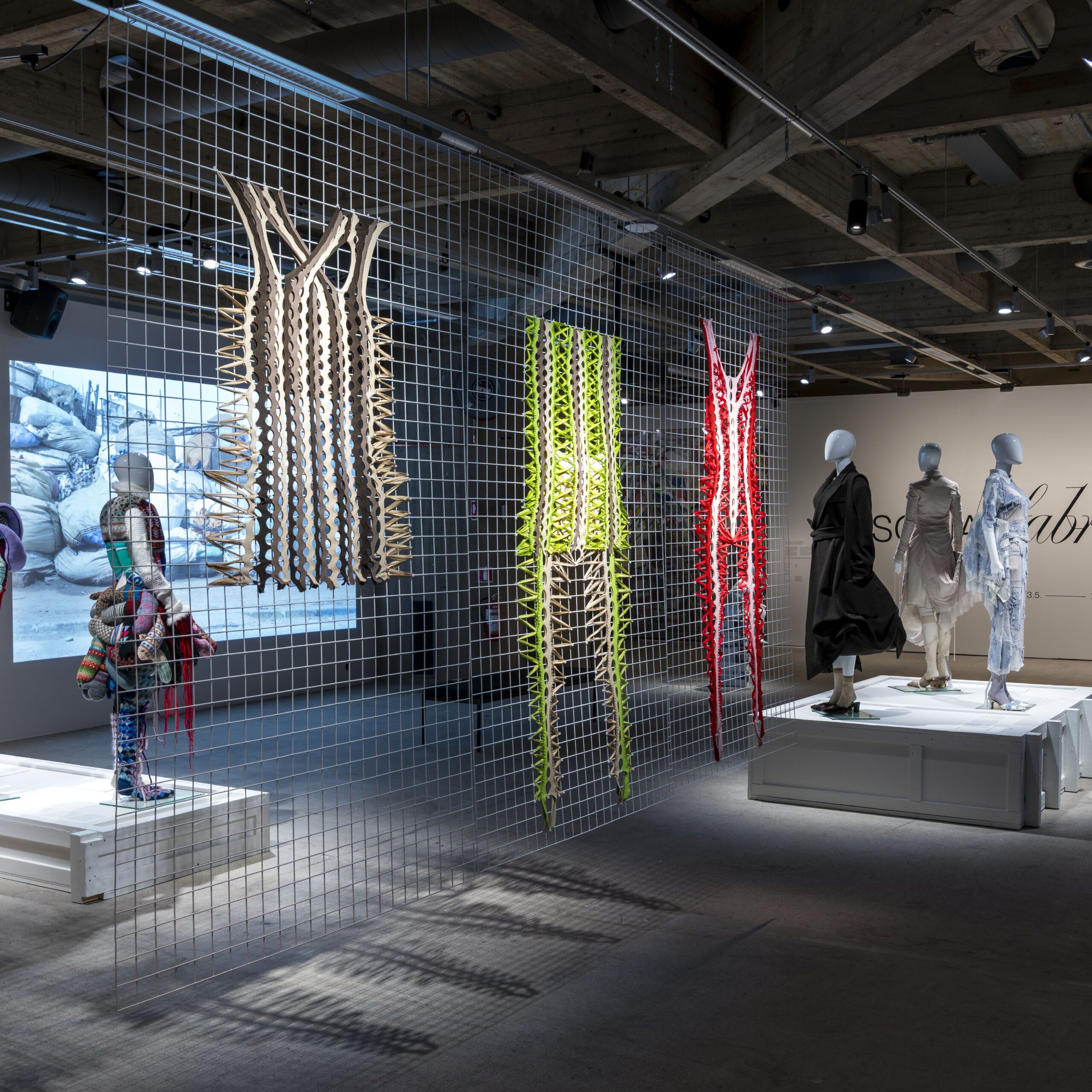
Fashion designer Sinéad O’Dwyer (b. 1991) wants to make clothes that fit every type of body. Her works defy fashion’s restrictive perceptions of size, colour and abilities. Rather than designing to a standardised body, O’Dwyer creates the garments to fit the wearer’s actual body.
The three adjustable looks displayed in the exhibition refer to the Japanese Shibari rope bondage. Shibari means beautiful binding, and it unites various themes of control and liberation. Decorative bondage combines with O’Dwyer’s ethos that fashion should be for every type of body.
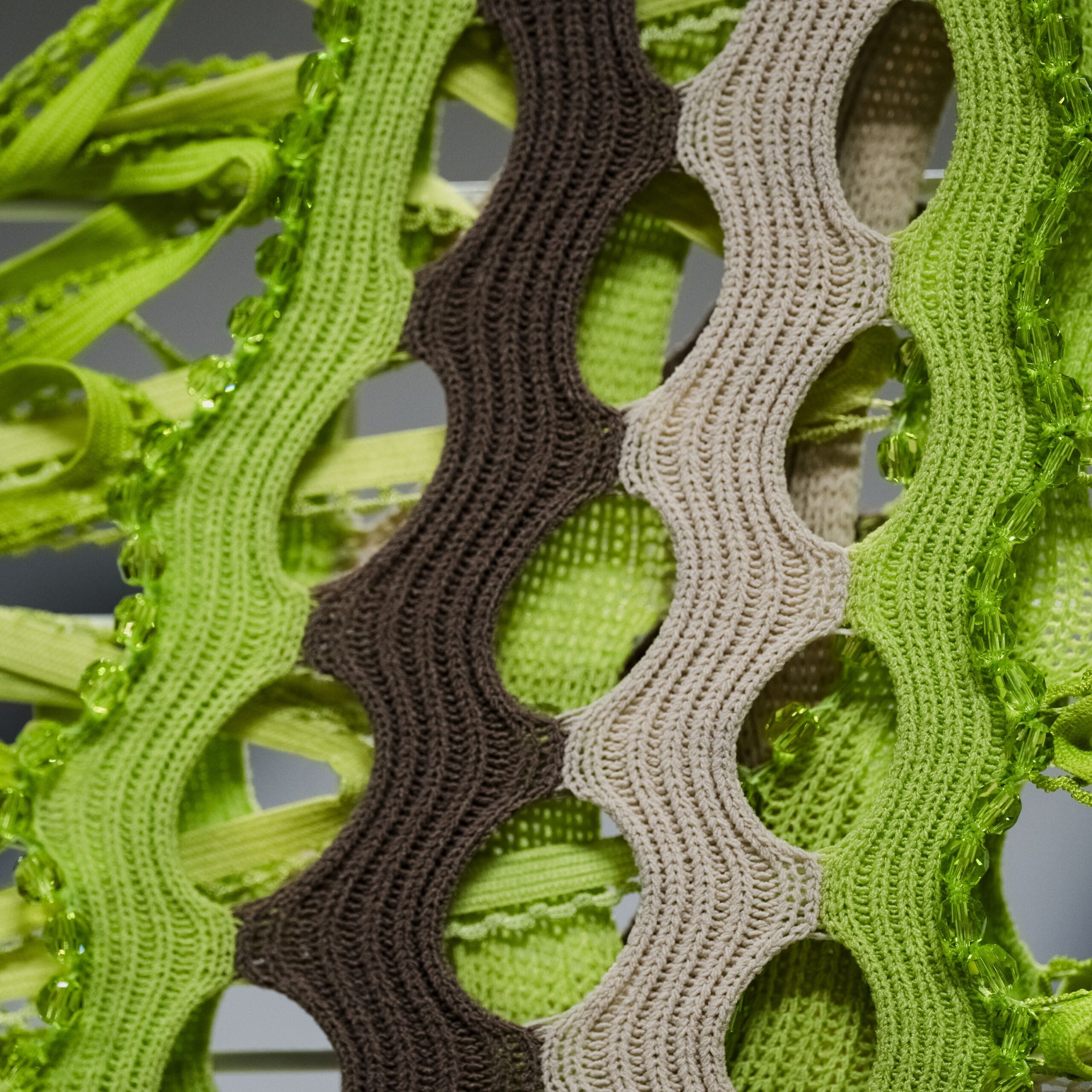
Winther, Sofie
MILL
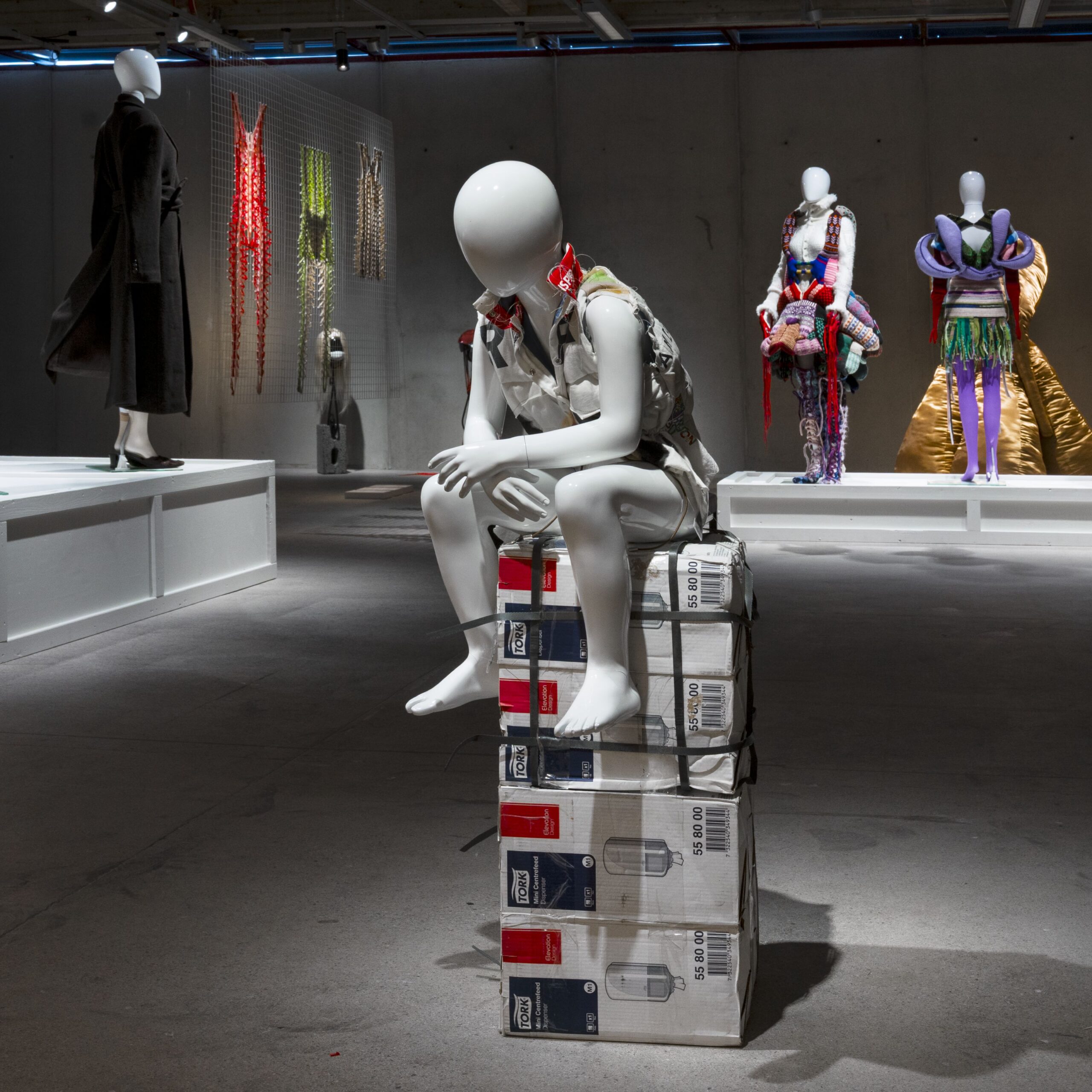
MILL (2023) is part of a series of works that explore the elements of dependence between the individual and systems. It refers to the phenomenon, “ant mill”, where a group of ants become separated from their main group and instead begin to follow one another, forming a continuously rotating circle. This circle is known as a “death spiral” because the ants might eventually die of exhaustion.
The paper dispensers serve as a pedestal for a child mannequin dressed in a vest made from recycled materials. The artwork comments on the endless consumption cycle of fast fashion and asks: What does it take to unwind the spiral of dependence?
Birth Control
Birth Control (2025) is a video work that explores material overconsumption and the relation between collective consciousness and the individual. It highlights how group behaviour can control the individual, whilst at the same time creating a shared synchronicity that produces a sense of connectedness. In the artwork ‘hoarding’ is an example of mass hysteria and addiction.
The performers in the video are dressed in garments made in cotton waste material, including old cut-up T-shirts with fossile like statements and decoration. Through re-construction of the material, Winther (b. 1991) addresses the predominantly female practice of sewing and mending as a practical, economic and sustainable skill.
Exhibition Team
Curators
Ane Lynge-Jorlén, Reetta Kalajo
Project management
Reetta Kalajo, Martta Soveri, Onerva Österberg
Graphic design and visual identity
Milla Rissanen
Technical design and construction
Jenni Enbom, Kalle Jarva, Miika Kyyrö, Ella Mustaniemi
Lightning
Lasse Lindfors, Jenni Salovaara
Conservation
Simo Karvinen
Registration
Jenni Enbom, Mereca Victorzon
Exhibition texts
Tero Hytönen, Reetta Kalajo, Ane Lynge-Jorlén
Mobile guide
Tero Hytönen, Ilari Strandberg
Audience engagement and events program
Tero Hytönen, Reetta Kalajo
Guided tour design: Riikka Alanko
Customer service design:
Maija Eränen, Bodil Stenvall
Marketing and Communications
Iris Suomi, Helmi Tolonen
Photography and documentation
Paula Virta
Service sales, visitor surveys
Essi Huhtanen
EMMA Shop
Mira Alanko, Salla Engström
EMMA customer service and guides
Translations
Simo Vassinen (english / suomi), Mats Forsskåhl (svenska)
Thank you
ALPHA
Alusasuliike Siro
Omnia, the Joint Authority of Education in the Espoo region, Textile and fashion
Juni Communications / Fashion in Helsinki Week
South-Eastern Finland University of Applied Sciences Xamk, Department of Culture
BA Programme in Fashion and MA Programme in Fashion, Clothing and Textile Design, Department of Design, Aalto University
The Helsinki Metropolitan Area Reuse Centre
The exhibition has received a state grant from the Finnish Heritage Agency